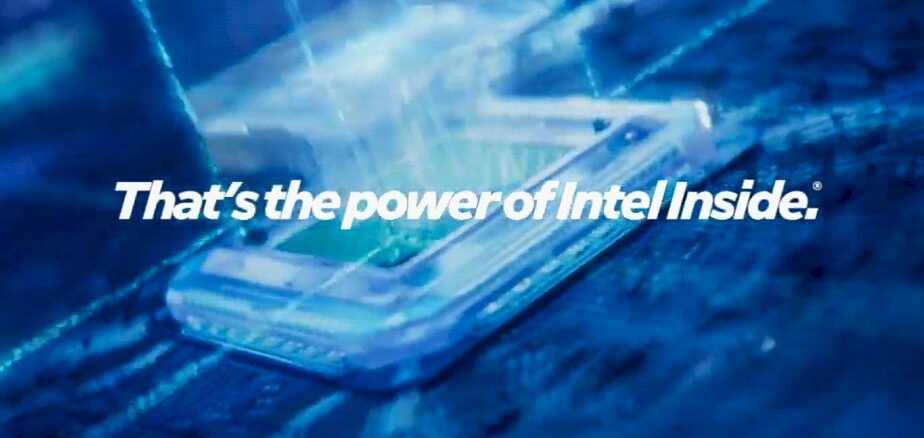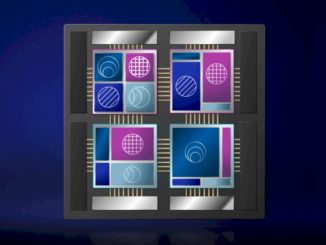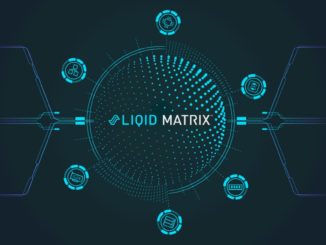
Intel is hosting its Vision 2025 annual event in Las Vegas this week, what we old hands used to call Intel Developer Forum back in the days when the chip maker was taking over more and more of the datacenter and had give the world a relatively inexpensive and uniform substrate on which to build hyperscale infrastructure.
As you might imagine, with revenues dropping and profits dropping faster, prodigal son Pat Gelsinger departed from the company he loves best and most, and a new-ish team now in charge of charting Intel’s future course and trying to steer the company’s foundry and products groups towards those goals, Intel is exhibiting some overdue humility. And, with venture capital investor and former Intel board member Lip-Bu Tan only a few weeks into his role as Intel’s seventh chief executive officer – not counting the interim one (Bob Swan) that Intel had from 2019 through 2021 and the interim pair (David Zinsner and Michelle Johnston Holthaus) that served for a few months starting in December last year when Gelsinger was ousted for reasons that have yet to be explained – we did not expect for much in the way of announcements or roadmap updates. But there was always a chance, and so we listened in over the two days.
By the way, to get some insight into how Tan thinks, you might want to read our coverage a few weeks ago when Tan was named Intel CEO.
We did learn a few things from the Vision 2025 keynotes, and not the least of which the team that will be driving the resurrection of Intel in the datacenter as its heavily moated Xeon X86 server CPU business is under siege.
We also got to see Tan and have him explain after an illustrious and profitable career why on Earth he would take the job of trying to save Intel. (We understood why Gelsinger, who never wanted to leave Intel and who probably should have been its top exec back in 2009 when Brian Krzanich was chosen over Gelsinger and Renee James to be Intel’s fifth CEO, who was also in the running and who spearheaded Intel’s software business.)
Tan gave the expected assurances that he would fix both the Intel Products and the Intel Foundry businesses, and keep them together as well as strengthening the company’s balance sheet, and then he answered the big question of why he took the job.
“The answer is very simple: I love this company,” Tan explained. “It was very hard for me to watch its struggle. I simply cannot stay on the sideline, knowing that I could help turn things around. I also fully recognize it won’t be easy. It had been a tough period for quite a long time for Intel, we fell behind on innovation. As a result, we have been too slow to adapt and to meet your needs. You deserve better, and we need to improve, and we will. Please be brutally honest with us. This is what I expect from you this week, and I believe harsh feedback is most valuable.”
Tan added that he was well aware of the talent that had already left Intel and that more talent would need to come back to Intel, presumably former Intel executives as well as others from outside of Intel who would have to be coaxed to come aboard.
And he said further that his time at Walden International, where he took $3 million in investments mostly from family and friends and turned it into a $5 billion empire that invested in 251 companies and sold 25 of them and did 41 initial public offerings, taught him how to build a company with small teams and intense focus. His time on the board of Cadence Design Systems taught him “about design methodology, the foundry ecosystem, and how to delight customers.” And not for nothing, during his dozen years running Cadence, the company grew its total addressable market by 3X and boosted market capitalization by 3,200 percent to hit $75 billion. “Most importantly, we became the trusted partner to customers and they knew they could count on us.”
Intel is important to Tan for other reasons, as he explained: “This is an iconic and essential company that is important to the industry and also to the United States. I care deeply about Intel success, and have many mentors from Intel over the years.”
Sometimes your mentors are younger than you are. Tan called out Sean Maloney, the former general manager of the Intel sales and marketing group in the Dot-Com era, as one of his.
Albert Yu, who like Intel’s co-founders Gordon Moore, Bob Noyce, and Andy Grove, started at Fairchild Semiconductor way back in the dawn of time, is another of Tan’s mentors. Yu spent three decades at Intel, first architecting the 80386, 80486, and Pentium CPUs and then rising to become general manager of its Microprocessor Products Group. Yu passed away in 2017 at the age of 76.
Tan also counts Dadi Perlmutter, who was general manager of Intel’s development centers in Israel and eventually took over the company’s mobile chip design and then its Intel Architecture Group from 2009 through 2014, as a mentor. As well he should. Perlmutter cleaned up the mess that the Intel server CPU group made by keeping Xeons at 32-bits and only letting the non-compatible Itanium go to 64-bits, a strategy that former CEO Paul Otellini – the first Intel CEO who was not an engineer – pushed to the great chagrin of the company and to AMD’s great delight as it launched the Opteron 64-bit X86 processor.
Intel’s manufacturing operations left the datacenter door open again in the middle 2010s as its 10 nanometer and then 7 nanometer processes failed to yield. AMD waltzed back in again after being vanquished for several years in the late 2000s and early 2010s, and has gained back around 30 points of market share for datacenter server CPUs since re-entering the market in 2017 with the Epyc CPUs.
And now all of the hyperscalers and cloud builders are building their own Arm servers and many of them are also working on their own AI accelerators. If Intel can’t beat them, then it wants to be in position to be their foundry of choice. It will take a lot of effort – and even more money – to get there.
Tan also hinted that other restructurings might be in the works, which is reasonable given the task ahead and the current cost structure of Intel.
“Going forward, at Intel, we will redefine some of our strategies and then free up the bandwidth,” Tan explained. “And some of the non-core businesses, we will spin them off and really focus on our core business and how to expand that using AI and Software 2.0. It will require a foundation shift from how we approached product design in the past. Intel’s approach has been inside out. We designed hardware, then you figure out developing the software to make it work. The world has changed. You have to flip that around. Going forward, we will start with the problem, what you are trying to solve and the workloads you need to enable, and then we work backwards from that. This requires us to embrace the Software 2.0 mentality, which means that having software first design mindset. I invested in quite a few of these Software 2.0 startups, and some will be really exciting and game changing. We will use AI driven system design to accelerate the development of new compute architecture platforms.”
That brings us to the executive team.
Dave Zinsner is staying on as chief financial officer at Intel. Michelle Johnston Holthaus is chief executive officer of Intel Products, and one of the first things Tan should do if he is not going to spin off the products group is stop having a second CEO title within Intel. (Sorry, Michelle.) Johnston Holthaus comes from the PC side of the Intel house, and she led her comments with talk about AI PCs, and given that PC CPUs is where Intel is getting almost all of its profits, you can’t blame her. She added after some discussion about the PC market (which we only are about inasmuch as it gives Intel the money to rebuild its datacenter business), she said that Intel wanted to strengthen “our datacenter capabilities across traditional datacenter workloads” and to “continue to innovate in AI.”
It is hard to argue with that. We still don’t really know what will happen beyond the current Gaudi 3 and the future “Falcon Shores” AI accelerator, which was relegated to “development platform” status back in January. With half of the revenue and all of the profits in servers coming from AI accelerators, we hope that Intel will not walk away from what is still a huge opportunity. Back in January, there was talk of a follow-on AI accelerator called “Jaguar Shores,” which looks to be a rackscale architecture with what we hope will be a memory interconnect across the accelerators as Nvidia is doing with its GPUs and NVLink switching.
We await the day when Tan does what must be done: Put out a credible multi-year roadmap for general purpose and AI compute and then make it happen. We all have to give Tan time to figure out a path.
Helping with that task will be Karin Eibschitz Segal, the new corporate vice president of the Data Center and AI Group, who assumed that role after Justin Hotard left that job in February this year to become CEO at Nokia.
Eibschitz Segal joined Intel as a software engineering manager in 2007 and rose through the ranks in the Intel Israel operations to be general manager of validation engineering and was named general manager of platform and system engineering for DCAI back in April 2024. She got her bachelors degree in computer science from Technion – Israel Institute of Technology, which has spawned a great many IT startups in the past several decades and is obviously a top-notch school that can compete with the likes of Stanford University or MIT when it comes to tech cred. Eibschitz Segal is a member of the Technion board of directors.
We understand why Intel has to talk about Gaudi 2 and Gaudi 3 and to show how it is competitive with Nvidia H100 and H200 GPUs, but we also remember that Intel took a $300 million inventory writedown on AI accelerators last fall, and had said previously that it had hope to sell $500 million worth of Gaudi accelerators in 2024. By our math, and knowing the Intel prices for Gaudi as we do (because Intel did the right thing and published list prices), that implies that only about 12,800 of the 32,00 Gaudi accelerators it had in 2024 actually sold.
By contrast, Nvidia sold millions of datacenter GPUs last year, and AMD sold a few hundred thousand.
Rounding out the executive team is Sachin Katti, senior vice president of the Network and Edge Group, who talked about the AI opportunity as well but made no commitments to products. Kevin O’Buckley is senior vice president of Intel Foundry, and Christoph Schell, the company’s chief commercial officer and head of its Sales Marketing and Communications Group. (Buy a comma, there.)
Katti got his bachelors in electrical engineering from the Indian Institute of Technology and his PhD in computer science from MIT, and after a few academic jobs was co-founder and CEO at Kumu Networks, a wireless networking company. He is also a professor of computer science at Stanford, and became chief technology officer for the NEX Group at Intel in November 2021.
O’Buckley got his bachelor’s in electrical engineering at Alfred University (just up the road from my family’s farm in upstate New York) and his masters in electrical engineering from the University of Vermont. He rose through the ranks at IBM Microelectronics, doing yield engineering and product engineering for the well-regarded Cell processor, and then managing the development of IBM’s 22 nanometer and 14 nanometer nodes. O’Buckley moved over to GlobalFoundries when it “bought” IBM Microelectronics, and stayed for four and a half years, and moved over to Marvell when the custom chip business that used to be part of IBM Microelectronics was taken over by Marvell. O’Buckley was put in charge of the Intel Foundry operations in May 2024.
That leaves the ebullient Schell, who has business administration and management degrees from Neoma Business School in France and ESB Reutlingen in Germany. Schell has had numerous management jobs at HP in printers and PCs, and rose to be chief commercial officer of HP (not Hewlett Packard Enterprise, but HP Inc) before joining Intel in March 2022 as CMO.
That’s Team Tan. And now we will see what that team can do.








Excuse me, I am fan boy of AMD. Beatiful Su Lisa CEO had little competition from a very aged team by Intel.
Sound very depressing!
about Li comment: What, beatiful woman or ancient guys ??